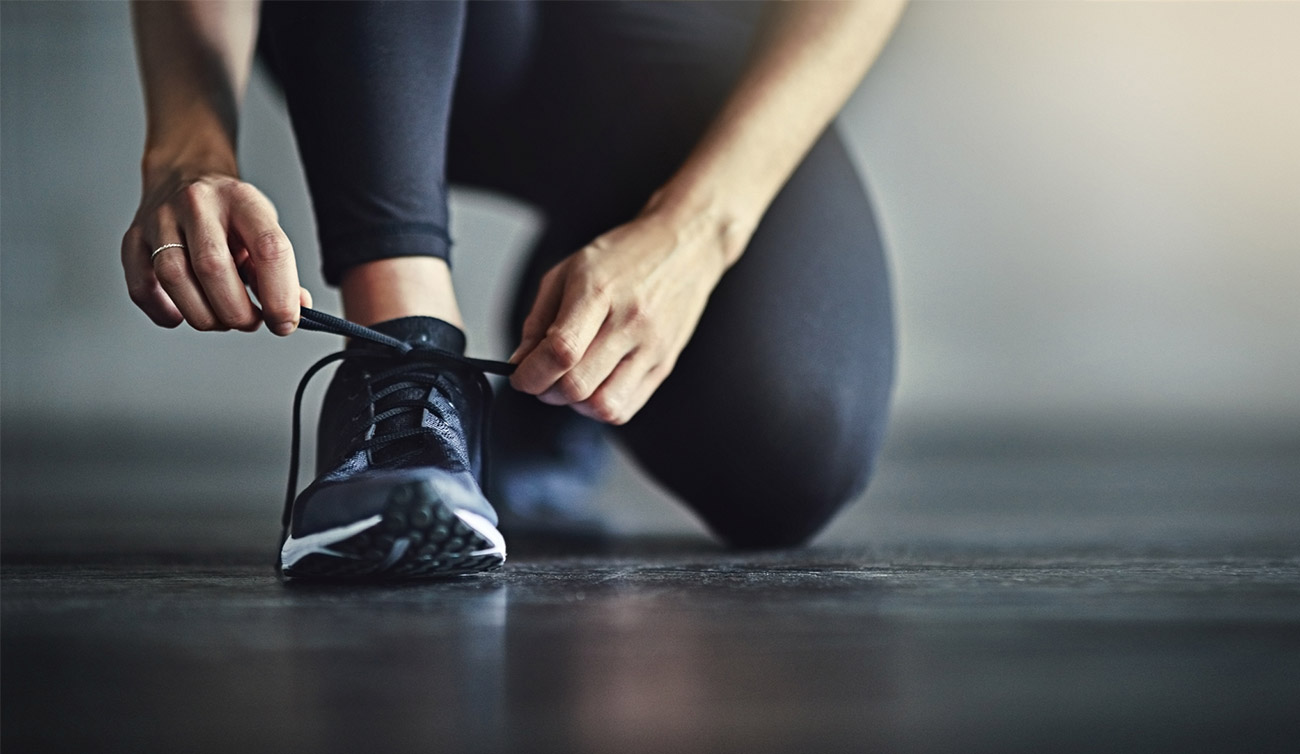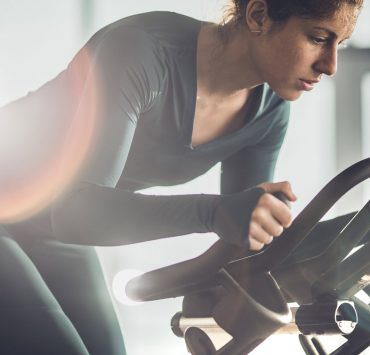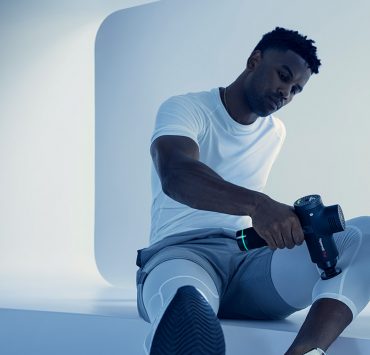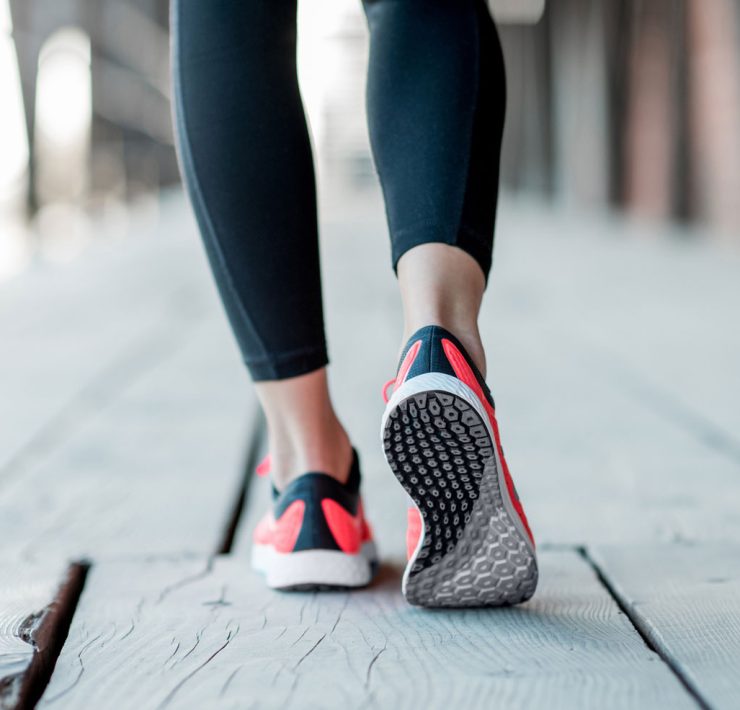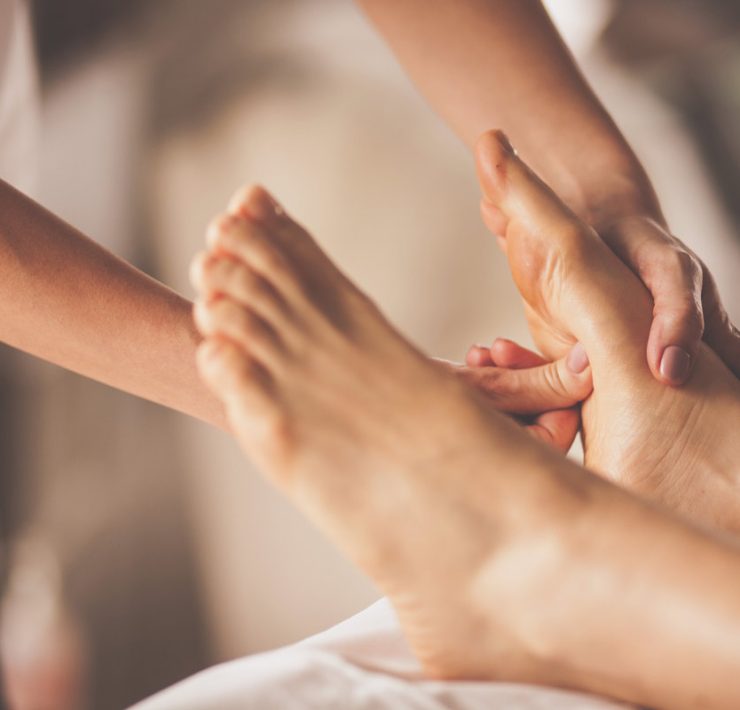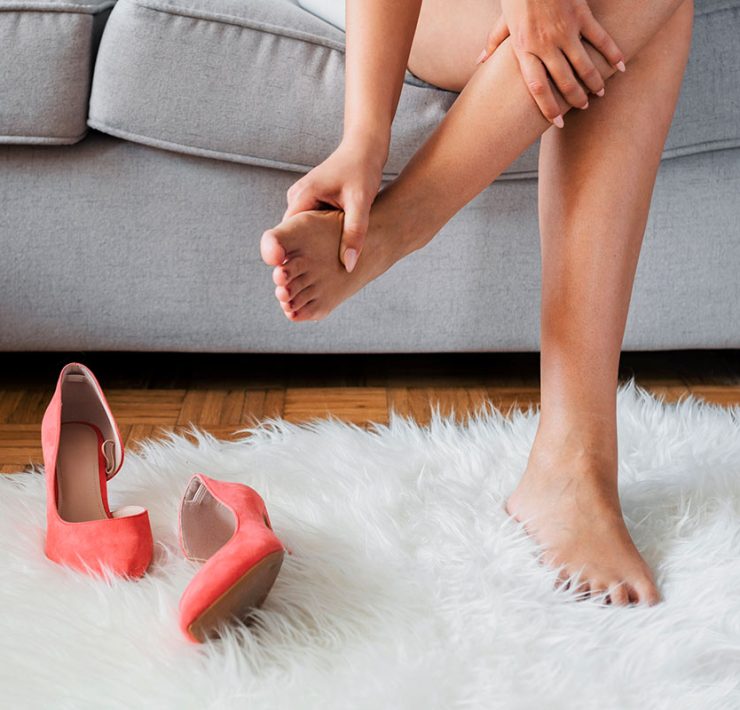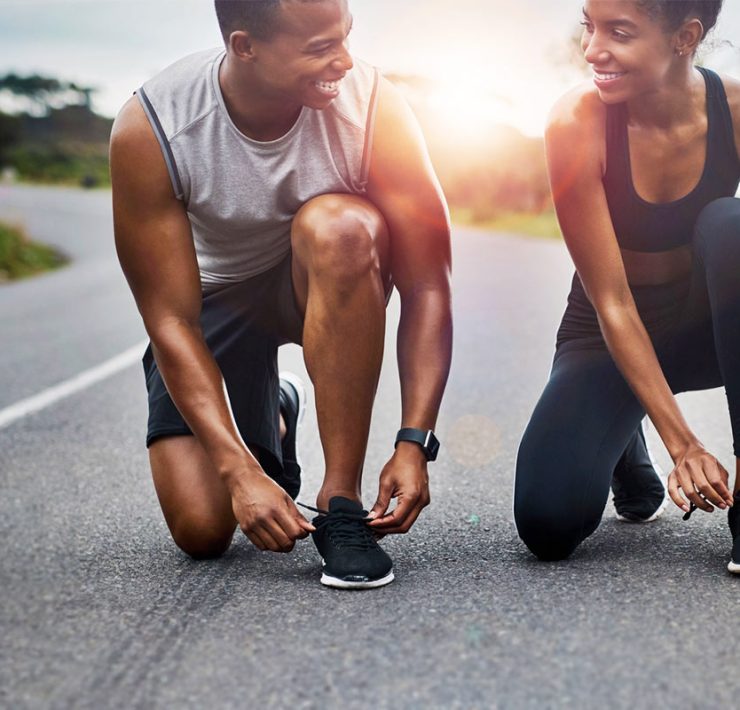Everyone knows the tired, achy feeling of being on your feet all day. Now imagine having three times your body weight bearing down on those poor paws—that’s the equivalent force with which the average person lands on each foot while running. Makes you want to put your feet up just thinking about it!
Of course, this can explain why regular runners are prone to an array of foot problems, from blisters and trains to more serious ailments like fractures.
So if you want to keep getting those miles in, then it’s critical to take the best possible care of the key body part keeping you going. Here are the 10 essential components of maintaining maximum foot health for every trail runner, marathoner, pack pusher, and treadmill jogger.
1. The Right Footwear
Shoes and insoles properly fitted to support your unique foot shape and comfort needs are 100% essential for foot health. For example, high arched feet need additional padding that has high shock absorption whereas flat feet require a high stability shoe with a slightly raised heel to take pressure off the midsole. Shoes that are too tight can cut off blood circulation in your feet and shoes that are too loose will cause blisters due to increased friction. Many athletic stores offer free gait analysis to help you find the right shoes for your feet and style of running.
Equally important: Remember to replace your shoes once you’ve surpassed 350 to 500 miles in them. Your favorite kicks may have carried you through the prudest race of your life, but you’re not doing yourself—or your feet—any favors running on worn out soles, no matter how comfy you may think they are.
2. The Right Socks
Ill-fitting socks that retain moisture are your enemy. They are a major reason for blisters developing due to the excessive rubbing of feet against the fabric and the dark and moist environment can create the perfect conditions for fungi to thrive.
Your best bet is socks made of water-resistant material that is lightweight enough to wick away moisture and allow your feet to breathe. This will reduce the discomfort of blisters and you won’t have to worry about developing the infamous Athlete’s foot.
3. Keep ’em Clean & Dry
An environment of consistent and excessive moisture in the feet—AKA sweating—can easily lead to fungal infections. So after you complete your daily run, make sure to thoroughly wash and dry your feet, especially between the toes, which is particularly prone to infection.
A good foot wash can also be extremely soothing to tired feet, especially if you can fit in a quick foot rub and maybe even a little aromatherapy. Nothing wrong with a little spa moment for your hardworking hoofs.
4. Moisturize
Once you’ve thoroughly dried your feet after your post-run shower, apply a moisturizer. Even though dry feet are less prone to fungal troubles, overly dry feet can become subject to painful cracks, so it’s important to maintain some level of moisture. Just be careful to avoid getting lotion in the areas between the toes, where it’s most essential to avoid unnecessary dampness. Anti-chafing sticks can also prove useful in preventing blisters and chapping in the first place.
5. Foot Massage (Pro or DIY)
A professional sports massage—which Zeel can of course deliver right to your door—can be a lifesaver for soothing aching feet (and other muscles). Just tell your massage therapist you’d like some extra attention paid to your feet.
Alternatively, you can try a DIY foot massage by taking a frozen water bottle or tennis ball (which are the correct shape and size to fit into the arch of the foot) and gently rolling it under the foot for an easy and effective foot soother.
6. Strengthening
It is key to activate and strengthen your foot muscles to avoid debilitating sports injuries or feet that hurt more than they should. Many doctors recommend being barefoot as much as you can and practicing foot exercises. Some easy stretches include:
- Toe raises: From a standing position, lift your toes for 1–2 seconds and lower back down. Repeat 20 times.
- Heel/Toe Walks: Flex your feet, balance on your heels/toes, walk forward for a minute. Rest and repeat twice.
- Toe Spelling: Imagining your toes are a sort of “air paintbrush,” slowly write out the letters of the alphabet in the air, one foot at a time. This will also provide your ankles and surrounding tendons with a beneficial stretch.
7. Stretching
A warm-up for your feet, legs and all muscles can help prevent injuries like tears and sprains and other issues like Plantar Fasciitis. Dynamic stretching is recommended, as it mimics the movements in a run, forcing the muscles to move in ways static stretching cannot.
Make sure your stretches target the glutes, calves, quadriceps, hip flexors and hamstrings in addition to your feet.
15 minutes of stretching is optimal for a pre-run session. 5–10 minutes post-run is sufficient.
8. Running Surface
Time spent pounding on concrete can take a heavy toll on your feet, so one should try to go for nature runs on dirt paths which will be more forgiving on the feet and stave off injuries. Andrew Shneider, DPM and board-certified podiatrist, recommends running on a crushed gravel path or a rubberized track and to find a level surface to minimize the harsh impact on your feet when running up and down hills or sloped surfaces.
9. Toenail Care
A common foot problem in runners is ingrown toenails which are not only painful but can get infected in a relatively short time frame. What you can do to avoid painful ingrown or fungal toenails is to keep your nails trimmed short (but not too short), cut them straight across (not curved), and always use a file to get rid of any sharp edges.
10. Proper Running Form
Any list of runner’s health essentials would be incomplete without a reference to running form or gait. Proper running technique is critical to preventing foot strain and injury. While some are born with a natural feel for body mechanics, most need to learn a thing or two about proper form. for this, we recommend you seek out a running coach or physical therapy clinic that specializes in running mechanics. It’s a small investment to make for a lifetime of healthy and rewarding running—and happy, healthy feet!

